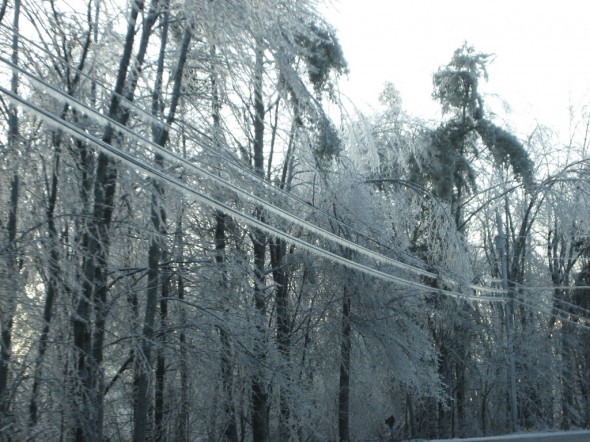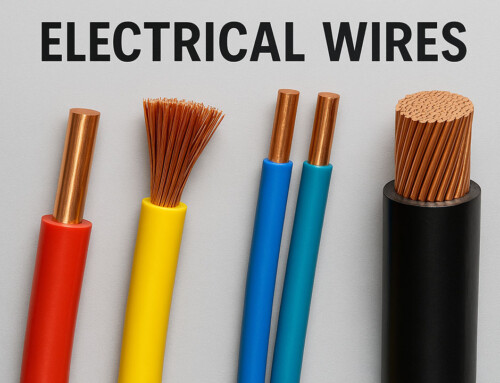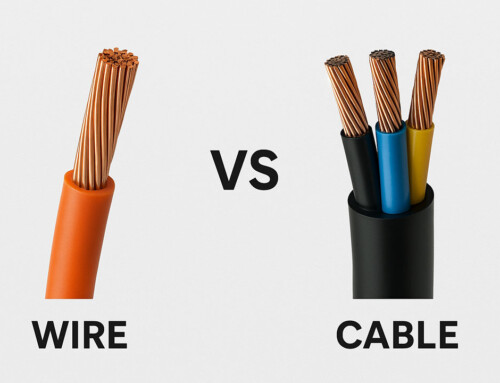High temperatures cause conductors to expand and hence increase in length. The converse is true for low temperature conditions. The change in length varies from one conductor to another depending on its thermal expansivity. The length of copper conductors, for instance, changes by 5 feet per 1000 feet of length when the conductor temperature changes from 100 – 0°, while aluminum changes by about 7 feet. The length increases with increase in temperature and reduces with reduction in temperature.
This increase or decrease in length is of great concern when installing power transmission lines between poles and towers, or when installing other power connectors. There must be an allowance for this change in length since it can cause catastrophes if it’s not there.
Weather changes are associated with increase and decrease in temperature and thus affect power transmission lines and other conductors. However, change in temperature is only one factor that affects power lines. Below are the changes that occur to power lines and other conductors as a result of weather changes:
Changes during summer
The amount of heat dissipated from power conductors is reduced during hot and calm weather conditions. Basically, if the temperature of air around the cable is low, more heat is lost from the cable to the air. If the air is already hot, the exchange of heat is lesser. This low heat dissipation causes the lines to overheat. However, the rise in conductor temperature (overheating) worsens when cables are transmitting too much power than required. The first effect of this increased conductor temperature is snagging, which is the downward bulging of the cable between two poles, caused by the increase in the length of cables.
Snagging is largest during extreme hot weather (largest increase in temperature) conditions experienced in summer. The increase in length results to downward bulging of the cable due to the effect of gravity. Excessive sagging is dangerous if it goes below the accepted height clearance – cables could come into contact with trees, buildings and other structures underneath, causing electrocution and fires.
Excessive sagging represent an added weight on the power line and this increase may cause the line to fail or to pull down weak poles and towers. The effects can be small but gradual and so the poles and towers will finally come down or require some adjustment/replacement after some time, which is costly. This sagging can also cause the lines to short out. Excessive sagging is also costly since it leads to increased electrical resistance. This means that a sagged power line transmits lesser current than it normally does, thus causing under-feeding of electrical equipment and industries. It is also costly and time consuming to rectify a sag.
Overheating of conductors also causes annealing of Aluminum, which gradually damages the physical and electrical properties of the conductor. This can affect their resistance, and hence efficiency in transmitting power. Damaged power line cables have higher chances of snapping during low temperature conditions. To mitigate this issue, utilizing mineral insulated heating cables designed to withstand such conditions can help prevent damage.
There are many techniques used to deal with sagging of power lines. While making the lines longer than the actual distance between the two poles or towers can control snapping, leaving excessive allowance can contribute to excessive sagging.
Alternatively, power companies monitor the increase in temperatures in order to take the necessary actions when needful, such as adjusting the length of affected power line span. Some also construct taller transmission towers to accommodate huge sags. Others limit the current loads to compensate for increased ambient temperature. Others also use spring and pre-stressed tensioners.
Winter effects
Fall in temperature could affect power lines by increasing the amount of heat dissipated from the conductors. This contributes to lowering of conductor temperature and thus the shortening or contracting of power lines. These cables could snap as a result of this shortening if there was inadequate allowance left during installation. Snapping and falling of poles/towers is sometimes catastrophic and can cause fires and deaths.
During winter, ice build-up on the power lines makes them too heavy to be carried by poles or towers increasing their chances of failure. Apart from temperature and ice build-up, sagging is also affected by wind. Wind is known to cool down cables, thus allowing them to transmit more power than they normally do. If the wind is blowing at the right angle to the power line, it will cause an increase of 10 – 40 percent in the amount of power transmitted. This can cause the lines to overheat and hence cause further sagging.
Wind can have similar impacts during summer and winter. However, extreme wind conditions at the time of uncontrolled sagging can increase the possibility of the lines to come into contact with each other or the surroundings structures. Wind can also increase the possibility of snapping by exerting some physical strain on tight cables.






